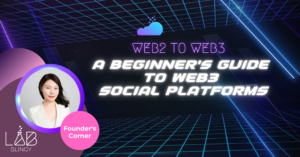A decentralized autonomous organization (aka. DAO) is a set of smart contracts that govern organizations. Autonomous refers to removing central control points of failure. Some of the most significant DAO protocols thrive because of decentralization. Core members of a DAO are responsible for making critical decisions involving the organization’s operation. Many believe DAOs are only partially autonomous because they require proper human interaction. Some even question whether complete autonomy is possible; should “DAO” be renamed to “DO”?
What is a DAO?
As previously mentioned, a DAO is an entity that operates without centralized governance. It’s a committee that agrees to work using specific rules for its common interest. The committee members own and manage the DAO using governance tokens, membership tokens, or NFTs to signify ownership. The organization’s operation can require voting, sometimes known as improvement proposals. These proposals, if approved, make the final decisions based on a majority vote.
DAOs have qualities that make them more appealing compared to regular organizations. In a traditional organization, when someone makes a decision, it typically has to be approved by a manager before reaching a level for actual implementation. DAOs have no hierarchy, meaning all members can act on proposals. The community members vote on proposals to help future protocol operations.
When the DAO reaches an agreement, these protocols and changes alter the future process of the DAO using smart contracts. The community members must agree on proposals; otherwise, the proposal does not pass. Examples can include increasing or decreasing a token’s supply, changing governance procedures, sending or withdrawing payments, etc.
Why DAOs?
In the ever-evolving Web3 industry, DAOs represent a critical innovation in decentralized governance and organization operation. DAOs offer accessibility, security, decentralization, and transparency. While there are a few drawbacks to DAOs, they certainly have many benefits. The autonomous and decentralized structure of DAOs is a prominent advantage. The autonomous system housed in smart contracts ensures all members are independent, facilitating freedom for DAO members.
DAOs also offer the opportunity for every member to contribute towards running or improving the organization. Stakeholders can submit their proposals and ideas and vote to improve DAO protocols. DAOs provide a neutral environment for the organization to operate. Without managers and intermediaries, DAOs remove the potential for conflicts and power plays.
A comparison: DAOs and Traditional Organizations
DAO
- Usually flat and fully democratized.
- Members require voting for any implementation of change.
- DAOs automatically count votes, and the outcome is implemented automatically without a trusted intermediary.
- Offered services, handled automatically in a decentralized manner (for example, the distribution of philanthropic funds).
- All activity is transparent and fully public.
A Traditional Organization
- Usually hierarchical.
- Depending on the structure, a sole party can demand or enforce change, or voting can occur.
- Internal vote counting and manual implementation of voting outcomes are allowed if voting is allowed.
- Requires human handling or centrally controlled automation which is prone to manipulation.
- Activity is limited to the public and typically private.
DAO examples
To help this make more sense, here are a few examples of DAOs use cases:
- A Charity – you could accept donations from anyone worldwide and vote on which causes to fund.
- Collective ownership – you could buy physical items or digital assets, then members vote on what to do with them.
- Grants and Ventures – you could start a venture fund that pools investment capital and determines which ventures to back based on voting. Money repaid could later be redistributed amongst DAO members.
- A Business – A business could incorporate and structure itself as a DAO. Wyoming was the first state to enact legislation enabling businesses to operate legally under a DAO structure in the United States.
History of DAOs?
The first DAO was created in 2016 by Ethereum supporters. It quickly became one of the biggest spectacles in the Ethereum ecosystem to date. People were allowed to send Ether in exchange for DAO tokens in its early stages. At that time, the DAO raised more than $150 million in Ether. The platform enabled people to express their ideas to the community and receive project funding. Unfortunately, DAO was hacked a month later after its official launch. The DAO was exploited for $50 million in DAO tokens as a hacker stole them.
The hack event resulted in the Ethereum blockchain creating a hard fork, meaning that the blockchain reverted to “undo” the hack. The Ethereum network split into two blockchains. One was Ethereum which erased the hack, and the other was Ethereum Classic which continued operating using the original chain.
It was not until a few years later that the concept of DAOs started gaining popularity again. But the hack raised questions about the accountability and governance of DAOs and the centralization of the Ethereum blockchain. In 2019, Ethereum members started several projects, mainly focusing on simple structures and how to use DAOs safely. Examples include Aragon, MakerDAO, MolochDAO, DAOhaus, and others.
Why are DAO projects still struggling with being fully autonomous?
DAOs need help to become completely autonomous mainly because complete decentralization is complex, and true Artificial Intelligence has yet to reach maturity. There has been no liability from decision-makers, making the founding team distrust a system where everyone is a decision-maker. When you rely on an extensive community with direct consequences, it creates anxiety in the group and affects the decision-making process, ultimately affecting the entire company.
Nearly all regular start-ups have only a handful of decision-makers because one wrong decision can significantly affect the company’s growth. Many early founders are cautious about who they involve in their core team. Founders make decisions quickly and move fast. However, this is different for DAOs, emphasizing the importance of consent and making decisions as a team.
DAO is a community-led organization, and founders must have confidence in the community when it comes to making the right decisions for the long-term benefit of the organization. Who can join the community is allowed, presenting challenges for the primary team to trust intentions. As such, some protocols would require a thorough recruitment process to find the right members.
What is the next phase of DAO?
For DAOs to remain true to their nature, where members have an equal voice in decision-making, decentralization must happen in several stages. Communities should be allowed to develop proposals and make decisions, but DAO councils maintain the organization’s integrity.
There are a few successful councils, such as PieDAO, Uniswap, MakerDAO, and others. These councils have systems where proposals go through numerous stages before approval. Communities are a crucial part of DAOs, and DAOs must develop structures that rely only partially on the primary team. While voting is essential in DAO, protocols must involve engagement and work with builders in the future.
Final Thoughts
DAOs are decentralized and secure, but not due to the organization’s structure. Most activities with DAOs involve core members of the organization making critical decisions. If DAOs have to remain completely autonomous, decentralization has to happen in stages. However, while creating an entity where everyone is allowed to participate in the operation of the organization actively is not easy, DAO represents a revolution where management spreads out, and people can work together effectively.
Follow my Twitter @JoyyuanWeb3 to learn about the trends of Blockchain, Crypto, and Web3!








